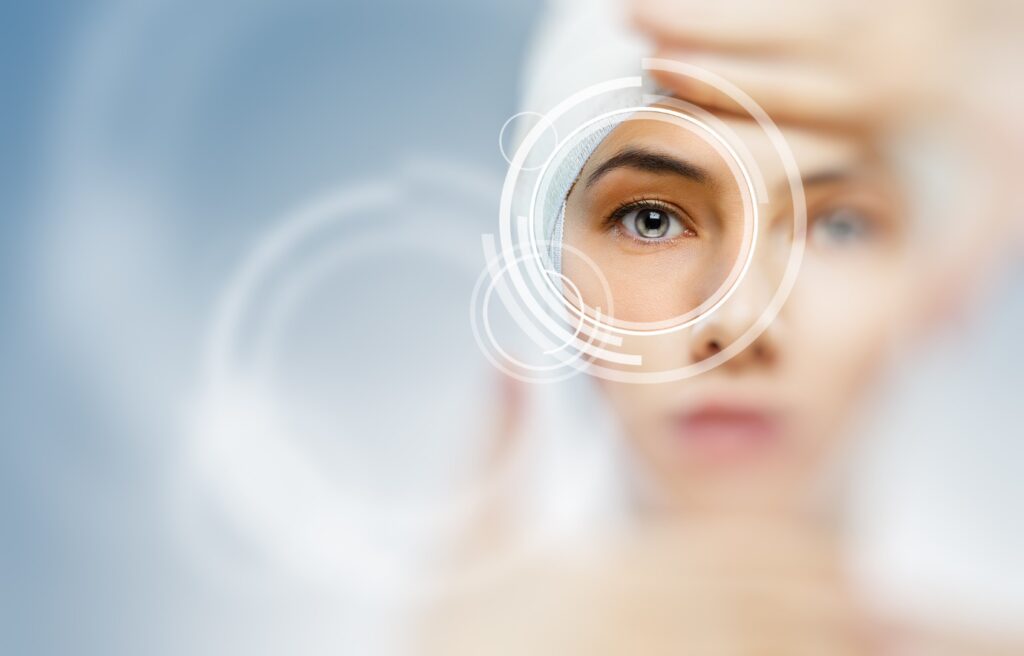The average adult spends more than 11 hours looking at a screen. If you work on a computer all day, you’re likely on the high end of screen time.
Keeping your eyes healthy when you stare at a screen all day can seem challenging. You can’t just stop using your computer if it’s part of your job.
Keep reading to learn tips to keep your eyes healthy at work.
1. Position Your Screen Well
Proper computer screen positioning lets you read the words well without straining or moving into a strange position. If it’s too far away, you’ll squint and strain to read the words. If it’s too close, you’ll have trouble focusing.
Keeping a minimum distance of 20″ is ideal. Avoid positioning your monitor any more than 40″ away. Start with 20″ and test out different distances to find an ideal position for you.
2. Keep Documents Close
When you can keep your documents close to your computer screen, you reduce how much focusing your eyes have to do. A document holder that keeps paperwork right next to your monitor lets you glance over slightly instead of completely moving your head. Your eyes don’t spend as much time focusing as they would if the documents were somewhere else.
3. Adjust Ambient Light Levels
Light levels affect how well your eyes can read paperwork and computer screens. If the light is too low, you’ll strain to read the words. Light that’s too bright can cause glares, which makes it more difficult to read.
Use natural lighting when possible. Choose artificial light that’s not harsh and that minimizes glare to supplement the natural light in your office.
4. Change Computer Settings
The lighting and contrast on your computer screen affect how easy it is to read the words without straining. Stronger contrast usually makes the text easier to read.
Screen brightness requires a balance. If it’s too dark, the words are more difficult to read. If it’s a lot brighter than the environment, especially if the ambient light is dim, the screen can be harsh on your eyes.
Some monitors, apps, and browsers offer a dark mode option that you might want to consider. While the dark background and light text can be more difficult to read at times, you might find it easier if you’re in a low-light situation.
5. Install Glare Filters
Glare filters that go over your screen can reduce eye strain. They cut down on how much light gets reflected off of the computer screen to reduce glare. You can also wear glasses with glare reduction coating.
Another simple glare solution can be to move your computer. If your office windows or lighting shine directly on the computer screen, they can cause glare.
6. Use Ergonomic, Adjustable Office Equipment
Adjustable office equipment makes it quick and easy to change your position for a better view. You can change the tilt and angle of things such as your chair, computer monitor, and keyboard to improve your posture and reduce overall muscle strain. Adjustable surfaces also let you get a clear view of your screen, making it comfortable to read without strain.
7. Wear Vision Correction
Having regular eye exams helps your ophthalmologist identify vision issues that need correction. Once you’re prescribed glasses or contacts, where them as your doctor recommends.
Consider the coatings you can get on your glasses and how they can help when working on your computer. Anti-glare coating can make computer work more comfortable. You can also get coatings that reduce blue light that comes from screens, which can protect your eyes.
8. Give Your Eyes a Break
Staring at your screen nonstop puts extra strain on your eyes. Get up from your computer and take a break whenever you can.
For times when you can’t leave your desk, you can use the 20-20-20 suggestion. Every 20 minutes, you should move your away from your computer screen and onto something that’s 20 feet away. Look at that item for 20 seconds before you go back to your screen.
Even blinking frequently can help your eyes. People tend to blink a lot less while using screens, which can dry out your eyes. Focus on blinking more often while you work on your computer to provide moisture to your eyes.
If your eyes still stay dry, you can use eye drops to moisten them. Most eye drops are safe to use throughout the day. If you wear contact lenses, choose drops that are compatible with them.
9. Watch Overall Health
Keeping your body healthy overall supports your eye health. When you have healthier, stronger eyes, they’re better able to handle the rigors of your workday.
Nourish your eyes with healthy foods, especially fruits and veggies with lots of natural vitamins. Omega-3 fatty acids help support your eyes.
Focus on overall health, such as exercising to reduce your risk of diseases. Many health problems, such as diabetes and high blood pressure, can lead to vision issues.
If you smoke, work on kicking the habit to protect your eyes. Smoking can contribute to a variety of eye problems, including cataracts, optic nerve damage, and macular degeneration.
When you keep your eyes strong and healthy, you’re less likely to experience problems at work.
10. Protect Your Eyes
Sitting behind a computer screen isn’t typically hazardous, but some parts of your job might take you into the field or warehouse, where you’re exposed to dangers. Always wear appropriate eye protection if you’re around hazardous objects or materials during work. This includes chemicals, tiny particles, tools, or small flying objects.
Keep Your Eyes Healthy at Work
Keeping your eyes healthy helps them feel more comfortable. It can also prevent long-term strain or damage to your eyes.
Explore our archives for more useful information.

